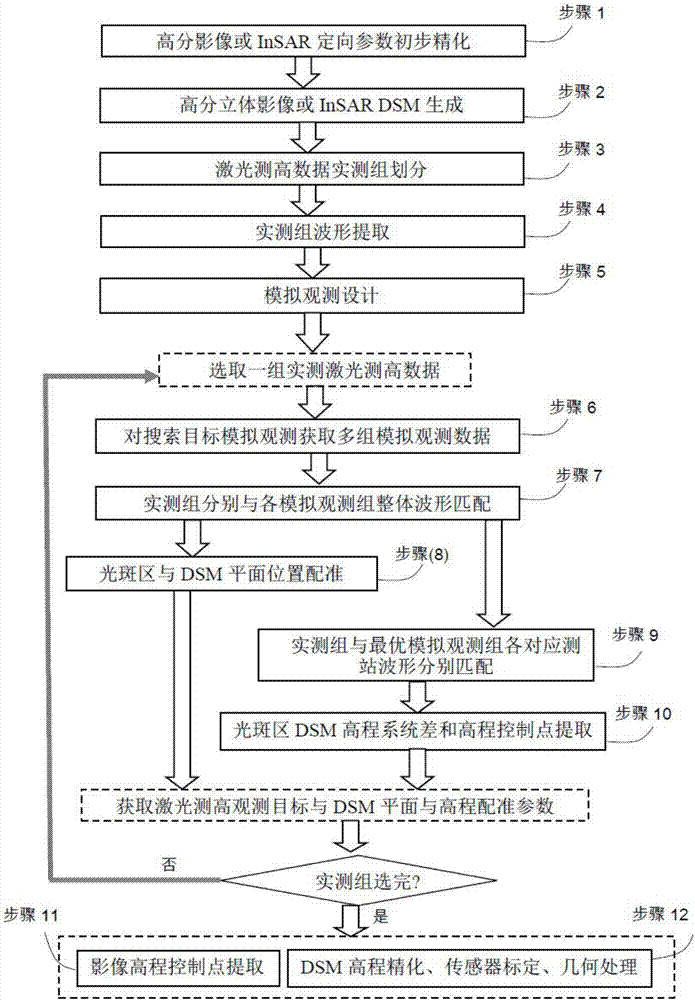Method for extracting elevation control point through assistance of satellite laser altimetry data
A technology for elevation control points and auxiliary extraction, which is applied in image data processing, measurement devices, radio wave measurement systems, etc.
- Summary
- Abstract
- Description
- Claims
- Application Information
AI Technical Summary
Problems solved by technology
Method used
Image
Examples
Embodiment Construction
[0055]A method for extracting elevation control points assisted by satellite laser altimetry data. Using the characteristics of remote sensing target positioning system difference, the extraction of elevation control points is divided into two parts: DSM elevation and elevation system difference. Accuracy is achieved through the group matching technology of the measured waveform and the DSM simulated observation waveform in the search area, such as image 3 shown, including the following steps:
[0056] Step 1. Refinement of high-resolution stereo images or InSAR orientation parameters: Perform block adjustment or free network adjustment on high-resolution stereo images or InSAR data to obtain orientation parameters after initial refinement for use in high-resolution stereo images in subsequent steps or processing of InSAR data;
[0057] Step 2. Generate DSM from high-resolution stereoscopic images or InSAR: use orientation parameters to generate DSM with geographic coordinat...
PUM
 Login to View More
Login to View More Abstract
Description
Claims
Application Information
 Login to View More
Login to View More - R&D
- Intellectual Property
- Life Sciences
- Materials
- Tech Scout
- Unparalleled Data Quality
- Higher Quality Content
- 60% Fewer Hallucinations
Browse by: Latest US Patents, China's latest patents, Technical Efficacy Thesaurus, Application Domain, Technology Topic, Popular Technical Reports.
© 2025 PatSnap. All rights reserved.Legal|Privacy policy|Modern Slavery Act Transparency Statement|Sitemap|About US| Contact US: help@patsnap.com



